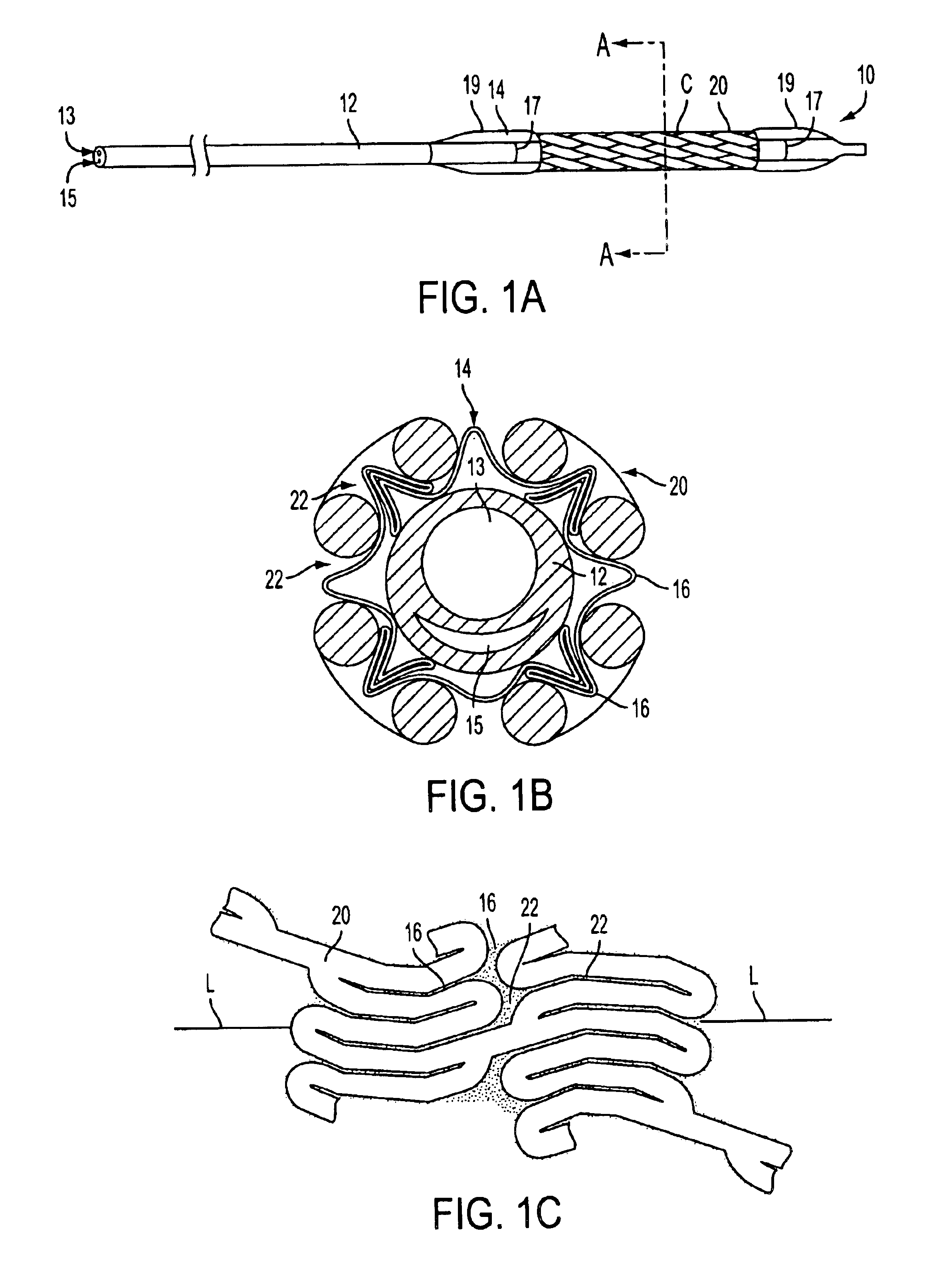Cold-molding process for loading a stent onto a stent delivery system
a stent and stent technology, applied in the field of cold molding process for loading a stent onto a stent delivery system, can solve the problems of less than optimal securement of the stent to the balloon, premature dislodgment of the stent, and difficulty in maintaining the stent on the balloon and in achieving symmetrical expansion of the stent, so as to improve the positional stability of the stent during the delivery.
- Summary
- Abstract
- Description
- Claims
- Application Information
AI Technical Summary
Benefits of technology
Problems solved by technology
Method used
Image
Examples
Embodiment Construction
The present invention comprises methods and apparatus for cold-molding a stent onto a stent delivery system. More specifically, the present invention provides methods and apparatus for obtaining a balloon having creases that extend non-uniformly into the interstices of a stent loaded onto the exterior of the balloon, without the use of a heating or chemical process.
With reference to FIG. 1, apparatus in accordance with the present invention is described. As seen in FIG. 1A, stent delivery system 10, illustratively shown in a collapsed delivery configuration, comprises balloon expandable stent 20 loaded on balloon 14 of delivery catheter 12. Stent 20 comprises an illustrative balloon expandable stent and may be replaced with other stents known in the art. As seen in FIGS. 1B and 1C, balloon 14 has creases 16 that extend non-uniformly into interstices 22 of stent 20.
In FIG. 1B, creases 16 are shown with varying slope and height about the circumference of stent delivery system 10. FIG....
PUM
| Property | Measurement | Unit |
|---|---|---|
| Length | aaaaa | aaaaa |
| Compressibility | aaaaa | aaaaa |
Abstract
Description
Claims
Application Information
 Login to View More
Login to View More - R&D
- Intellectual Property
- Life Sciences
- Materials
- Tech Scout
- Unparalleled Data Quality
- Higher Quality Content
- 60% Fewer Hallucinations
Browse by: Latest US Patents, China's latest patents, Technical Efficacy Thesaurus, Application Domain, Technology Topic, Popular Technical Reports.
© 2025 PatSnap. All rights reserved.Legal|Privacy policy|Modern Slavery Act Transparency Statement|Sitemap|About US| Contact US: help@patsnap.com



